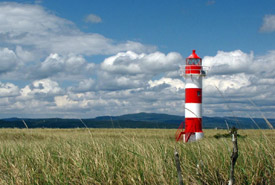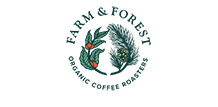Sandy Point

Lighthouse at Sandy Point, Newfoundland and Labrador (Photo by Aiden Mahoney)
Situated south of Stephenville, Sandy Point is an uninhabited 200–300 hectare (494–741 acre) island renowned for its tidal flats, salt marshes and sandy beaches. This habitat is uncommon in Newfoundland and Labrador, where much of the coast is rocky and rugged. The Nature Conservancy of Canada’s (NCC's) Sandy Point Nature Reserve protects 27 hectares (67 acres) here, made up of 11 properties.
Sandy beaches and dunes are important nesting habitat for numerous bird species, including the endangered piping plover. Because piping plover lay their eggs directly in the sand, visitors are advised to use the beaches with caution, especially during nesting season in June. Sandy Point’s unique salt marshes provide a rich habitat for many species of birds, and are home to provincially rare and uncommon plants, such as seaside lavender and saltwater cordgrass.
Sandy Point was once a thriving community in southwest Newfoundland. When the peninsula became an island due to erosion, the people of Sandy Point relocated, many to the nearby community of St. George’s. Remnants of Sandy Point’s human history can still be seen today, including foundations, cemeteries and the old dock and breakwater. The impressive lighthouse on the northeast point was restored by the Canadian Coast Guard in 2010.
Since 2013, NCC has been leading an annual beach cleanup to clear garbage and marine debris from Sandy Point. In that time, NCC staff and volunteers have removed almost 1,360 kilograms of garbage from the island. NCC’s stewardship work on the island would not be possible without the dedicated support of many local volunteers.




